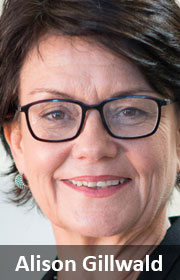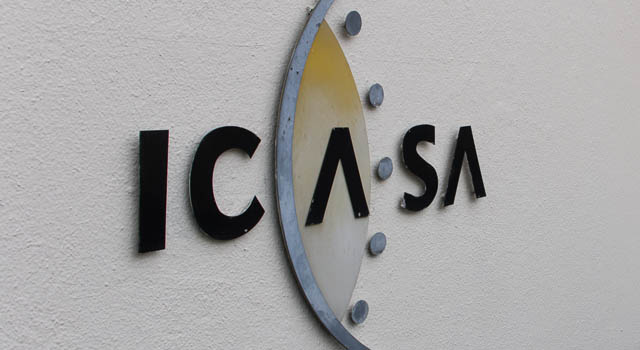 The recently released national integrated ICT policy white paper mandates an open-access, wholesale wireless network with exclusive rights to high-demand spectrum.
The recently released national integrated ICT policy white paper mandates an open-access, wholesale wireless network with exclusive rights to high-demand spectrum.
This is intended to break the stranglehold of the dominant mobile cellular operators and allow for the entry of new players into the telecommunications market. Government also intends to recall all spectrum previously awarded to mobile operators.
The policy claims that such open and shared networks, through service-based competition, produce high-quality and innovative products at affordable rates and drives broadband into underserved areas.
So, what is so controversial about that?
There are number of concerns that arise from a monopoly open-access wireless network, but the fundamental question is whether open-access networks in and of themselves produce these positive outcomes — and if this pertains to wireless networks where it has seldom been applied. This raises a number of other concerns.
These include the lack of evidence to support the creation of an exclusive open-access network; whether there is the institutional capacity and sophistication to set up a viable model; if the mobile market is sufficiently uncompetitive and dominance in the mobile market severe enough to justify the restructuring of the market; and in the absence of such dominance being determined by communications regulator Icasa through the required legal processes, if the state is not opening up itself and the regulator, who is mandated to license a consortium to operate the network, to protracted legal challenges.
Even without legal review, there are concerns that the process to establish the network will further delay the release of the high-demand 2,6GHz spectrum band, the release of which has already been delayed by more than five years. Operators need urgent access to this band to evolve their businesses cost effectively to meet the pent-up demand for data. Other concerns relate to the opportunity cost of such delays, not only for the sector but the national economy at a time the kind of stimulation this would provide is most required.
Arguably of greater concern is the intention by government to recall spectrum already allocated to mobile operators and the negative impact of this on the credibility of the state commitments and on investment in sector when the country is facing a possible downgrade by rating agencies.
Other concerns relate to the feasibility of the open-access network itself, the nature of the consortium to manage the network and the creation of the necessary incentives for the significant investment required to underpin service-based competition. Let us consider some of these concerns.
Despite the policy currency of open access in ICT policy, there is little evidence to support the claim that open-access networks ensure public policy outcomes of increased competition in services, improved efficiency, decreased prices, high quality and universal service. Our own state-owned open-access wholesale broadband company, Broadband Infraco, which was set up with these objectives, has not realised any of them.
In fact, a growing body of evidence from mature markets indicates that the adoption of certain mandatory open-access network strategies that may produce some of these outcomes — for example improve prices or access to ICT — but this may come at the expense of other critical objectives such as investment and innovation.
In Mexico, the extensive constitutional and institutional adjustments to enforce the open-access network … has resulted in a legal and regulatory maze that has delayed the process for years.
Furthermore, while there may some examples of successful open-access fixed networks, voluntary and mandated exclusive wireless open-access networks as proposed in the new policy have not yet been implemented successfully anywhere in the world.
Mexico and Kenya are cited as markets where open access has been identified as a remedy for extreme dominance, and where mobile is the predominant form of access to broadband.
But efforts to implement open-access wireless networks for high-demand spectrum to increase competition in these markets have failed.

In the case of Kenya, the dominant, still significantly state-owned operator was able to extract itself from the open-access network, rendering it unviable.
In Mexico, the extensive constitutional and institutional adjustments to enforce the open-access network (the digital dividend 700MHz band only) has resulted in a legal and regulatory maze that has delayed the process for years. The project now appears to be unravelling.
Although the South African market is concentrated, it does not share the extreme dominance found in either of those countries (over 75% at the time).
Nor does the dominance of either Vodacom, with nearly 40% mobile market, and MTN, with more than 30%, extend across the fixed and mobile markets. With four players in the market, a mobile virtual network operator and several niche MVNOs, it could be made more competitive and better directed towards public policy goals if regulated effectively.
Although mobile operators might not have met certain public policy objectives, they have been highly successful from a network investment and coverage perspective
Access to mobile facilities, possibly even access point name (APN)-level access, which would allow independent data services to run on top of the mobile network, and regulated Internet protocol transit costs could contribute to the competitiveness of the sector.
But in South African law, as it currently stands, this regulatory intervention can only happen after Icasa has undertaken a market review in order to ascertain bottlenecks and dominance.
This aligns in with competition law and practice internationally, where open access is mandated only as a remedy in monopoly markets or when abuse of dominance is demonstrable.
The failure of Icasa to do so on the basis of two resource-intensive market reviews undertaken in 2008 and 2013 is what has permitted operators to act with regulatory impunity and has resulted in the lack of competitiveness of the market and the search for other mechanisms by government to achieve national policy objectives.
Although mobile operators might not have met certain public policy objectives, they have been highly successful from a network investment and coverage perspective, bringing about the mobile revolution that has brought communications to masses of people in the country and across the continent for the first time.

The primary challenge for government in ensuring the feasibility of an open-access wireless network is the development of an incentive strategy that will replace the billions of rand of investment — more than R10bn each in the case of Vodacom and MTN this year alone — that is responsible for delivering services to South Africans. Though prices are high and undoubtedly require more effective wholesale regulation, competitive investment in infrastructure is responsible for the pervasiveness of mobile networks in Africa.
The policy does identify the investment incentive of reduced spectrum fees for the open-access network. These are significant costs drivers for operators, but it is a premium they are prepared to pay for control of the spectrum — it is the core of the business.
Even at cost, spectrum an operator cannot deploy competitively may not be worth investing in at all. And if there is no control of spectrum and it can be cheaply sourced from the open-access network, what is the incentive to invest in the network?
And then there is the vehicle for the open-access network itself. The policy mandates the regulator to license a consortium based on successful undersea cable consortia such as Wacs as well as the open-access model on which Seacom is operated. The differences lie in the fact that there are competing cable companies and it is this that has driven down international bandwidth prices.
Government should exercise caution in undertaking such a high-risk experiment when regulatory remedies have not been exhausted in relation to the creation of a competitive market
Undersea cables are typically operated as consortia of experienced, deep-pocketed operators, which reach a once-off, 25-year agreement on an end-to-end cable investment, with possibly dozens or hundreds of wholesale customers at most. A mobile wireless network is dynamic, operating in a fast-changing, highly competitive environment with millions of customers.
And then there is the anxiety about whether there is the institutional capacity and sophistication to oversee the complexity of creating a viable single, open-access network.
The absence of state co-ordination in relation to spectrum, first with the digital television migration mess and then the five-year-long ministerial delay in issuing a policy directive on the release of high-demand spectrum — which has now resulted in a legal standoff with the regulator — is a big worry.
Even with the intended rationalisation of the regulator into a specialised economic sector regulator, as proposed in the new policy, there is little to suggest that this necessary administrative buttressing will make such a process work.
Government should exercise caution in undertaking such a high-risk experiment when regulatory remedies have not been exhausted in relation to the creation of a competitive market.
It should consider the possibility of a modified spectrum auction that targets more public-interest outcomes than Icasa has proposed. It should at the very least release the available 2,6GHz spectrum to unlock the associated social and economic multipliers.
Underserviced areas
How the open-access network will drive services into underserviced areas is unknown. The challenges of reaching “uneconomic” areas are better solved through a qualified auction of high-demand spectrum that requires operators first to provide services to underserviced areas before they are able to deploy infrastructure using the spectrum in the more lucrative urban areas.
There are a number of interventions that could ameliorate digital inequality by making available low-cost or free spectrum. The regulator should immediately enable these irrespective of how access to high-demand spectrum is resolved.
These include making available dynamically assigned spectrum, such as TV “white spaces”; releasing unused mobile GSM spectrum to rural communities to self-provide; negotiating with operators the exchange of high-demand spectrum for free access on their 2G networks; and more rapidly rolling out free public Wi-Fi networks providing limited fast Internet access as required by South Africa Connect at every public building connected to broadband.
- Alison Gillwald is executive director at Research ICT Africa and adjunct professor at the University of Cape Town’s Graduate School of Development Policy and Practice. See Research ICT Africa’s website for more information on the topic




